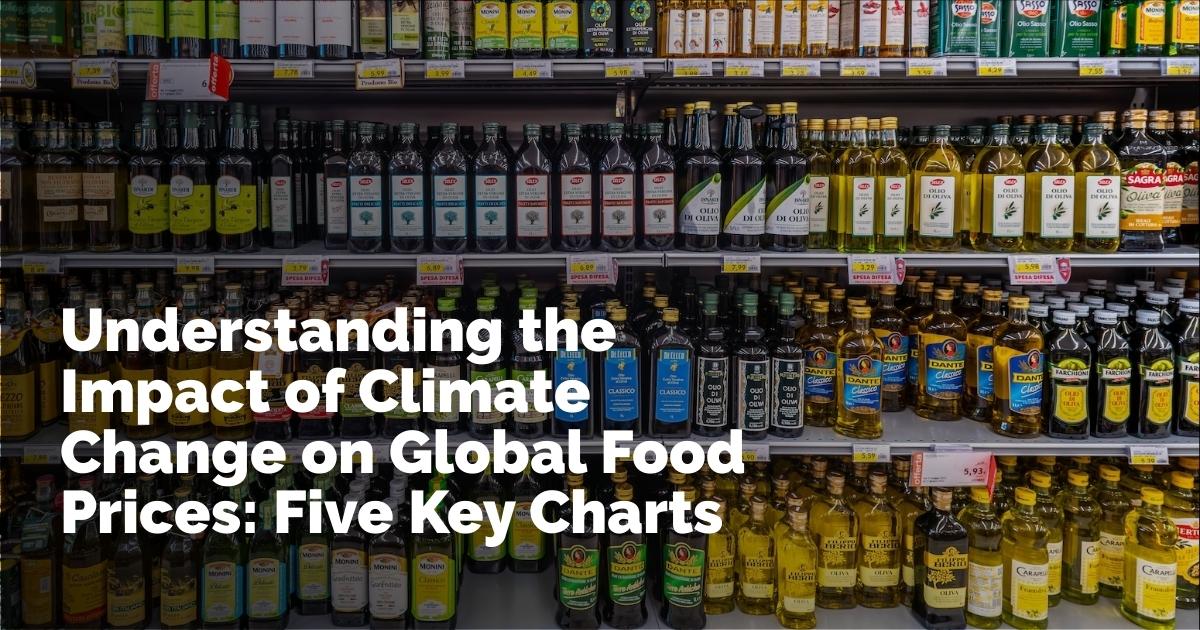Five Charts: Understanding How Climate Change Influences Global Food Prices
Climate change is increasingly seen as a driving force behind the fluctuations in global food prices. Over recent years, these prices have experienced significant volatility, reaching unprecedented highs in 2022, dipping in 2023, and then gradually increasing again. A combination of extreme weather events, geopolitical conflicts, high agricultural input costs, and heightened demand has fueled these changes. By examining various aspects, we can better understand how climate change is impacting the cost of food and what this means for the future.
The Relationship Between Climate and Food Production
Climate change has a direct impact on food production, leading to changes in both the supply and quality of produce available in the market. As temperatures rise and weather patterns become increasingly erratic, traditional agricultural cycles are disrupted. These disruptions can include unexpected droughts, floods, and storms that damage crops, reduce yields, and ultimately affect the availability of food supplies. This diminished supply often leads to increased prices as demand outpaces production capabilities.
For instance, olive oil and orange juice are basic commodities that have seen a noticeable rise in price. These items, heavily affected by the climate conditions in their primary growing regions, illustrate how localized weather patterns can have global pricing implications. Meanwhile, some grains experienced a price drop earlier in the year, highlighting how different food types are variably affected by climate-induced conditions.
The Impact of Geopolitical Conflicts on Food Prices
Geopolitical instability and conflicts also play significant roles in driving food prices up. Regions that are plagued by conflict often face disruptions in farming activities, trade routes, and supply chains—all of which contribute to food scarcity. When these regions are significant agricultural producers, the global food market can feel the ripple effects.
These geopolitical tensions often exacerbate the problems caused by climate change. In some instances, countries may turn to protectionist policies, such as export bans, to ensure domestic availability, which can in turn lead to increased global prices. The intersection of climate-related challenges and geopolitical conflict creates a complex web of factors that can amplify food price volatility.
Economic Factors Contributing to Rising Food Costs
Apart from climatic and geopolitical influences, economic factors such as high input costs for agricultural production also contribute to rising food prices. The prices of fertilizers, pesticides, and machinery necessary for farming have gone up, driven by increased energy prices and supply chain bottlenecks. These heightened costs are often passed down to consumers, further increasing the final price of food products.
Moreover, increased demand for food, fueled by growing populations and changing dietary preferences, puts additional pressure on food supplies. This demand-driven pressure often results in heightened competition for available resources, pushing prices higher, especially when coupled with the aforementioned supply constraints due to climate change.
Political Responses to Food Inflation
In response to the rising food prices, political figures and entities have started to propose measures to mitigate the impact on consumers. For example, during the recent US presidential election campaign, Democratic nominee Kamala Harris suggested banning “price gouging” by corporations on groceries. Such proposals highlight the political dimension of food inflation, where policymakers are compelled to address the economic burden on citizens.
Various governments are also investing in strategies to enhance food security, like supporting technological advancements in agriculture and reinforcing local food production capabilities. These initiatives aim to buffer communities against future price shocks by ensuring a more consistent food supply.
Visualizing the Future of Food Prices
Carbon Brief, through a series of analytical charts, has provided insights into how climate change impacts food systems. These visualizations help elucidate the complex relationships between climate phenomena and food economics, offering a clearer picture of what the future may hold if current trends continue.
By systematically analyzing climate patterns, economic data, and other influential factors, these charts underscore the urgency of addressing climate change not only as an environmental issue but also as a critical economic and food security challenge. Understanding these dynamics is essential for formulating effective policies and investing in resilient agricultural practices that can withstand the pressures of climate change.
Conclusion: Adapting to a Changing Global Food Landscape
The interplay between climate change and food prices is multifaceted, with implications that touch on environmental, economic, political, and social arenas. As climate change continues to influence global food production and pricing, it becomes crucial to adopt sustainable practices and robust policy frameworks that can mitigate its impact. By doing so, the goal is to create a more resilient food system capable of withstanding future challenges and ensuring food security for a growing global population.
출처 : Original Source

